Oct 28, 2019 | Alumni, Ecosystems, Environment
By Bernd Lenzner, post-doctoral researcher at the Department of Botany and Biodiversity at the University of Vienna, Austria and IIASA YSSP alumnus
To guide action towards a sustainable future for nature and people, it is crucial to understand the role of invasive species in shaping global biodiversity and ecosystem services, as well as how this depends on human actions.
Imagine arriving at the shores of a country you have never visited before. What kind of nature awaits you? Will you be stunned by the beauty of plants and animals you only know from documentaries and books? Will you be fascinated by the songs of birds you’ve never heard before? Or, will you find species you know from your backyard and the landscape surrounding your home?
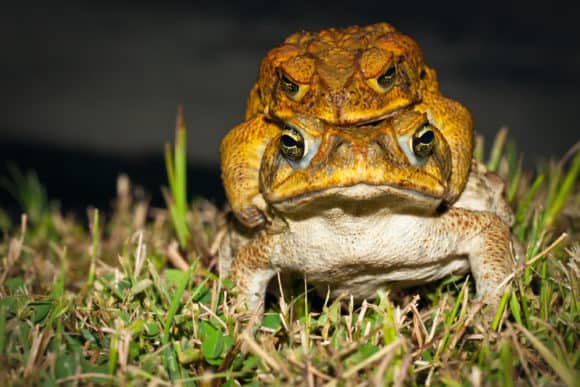
© Johan Larson | Dreamstime.com
Most of us probably hope to find new, untouched nature with many plants and animals we haven’t encountered yet. Isn’t that after all the purpose of exploring our planet? Unfortunately, nowadays we see that the biota in many regions of the world are becoming more and more similar as a consequence of the movement of species by humans across the globe. Recent studies have shown that approximately 4% of all plants [1], 10% of all birds [2], and 2% of all amphibians and reptiles [3] worldwide can be found in regions outside their native distribution, and these numbers are increasing with no sign of saturation [4]. Once introduced, these so-called alien species can emerge as a major threat to global biodiversity [5] and ecosystem services [6], and lead to global biotic homogenization [7].
We know that these trends are driven not only by the intentional and unintentional human introduction of species into new regions through increased trade and transport, but also by how climate and land use facilitate the establishment of species outside their native range. While these drivers are expected to largely evolve in the decades to come, researchers have so far been unable to build scenarios exploring the long-term dynamics of the distribution of alien species and their impacts.
I lead a joint study between researchers from Vienna University, IIASA, and other colleagues that was recently published in the journal BioScience [8]. In our paper, we introduced the necessary steps for building scenarios of future long-term dynamics of biological invasion at a global scale. We propose a general framework for global 21st century scenarios and models of biological invasions and review essential datasets and milestones. This is the first time that biological invasions are put into a global scenario context with the aim to develop qualitative storylines that can be linked to quantitative models.
I actually started working on this in 2017 when I was still a PhD student in the Division of Conservation Biology, Landscape, and Vegetation Ecology at the University of Vienna, and a participant in the IIASA Young Scientists Summer Program. The project helped to build bridges between research communities deeply involved in core activities from the Intergovernmental Science-Policy Platform on Biodiversity and Ecosystem Services (IPBES).
IIASA was involved in IPBES’ methodological assessment on the use of models and scenarios for biodiversity and ecosystem services and in its efforts to apply biodiversity models in existing IPCC scenarios [9] to deliver insights into the IPBES’ global assessment report released earlier this year. Recently, the IIASA Bending the curve project [10] led by David Leclère, a researcher in the Ecosystems Services and Management Program, used models to elicit what type and ambition of actions are necessary to reverse biodiversity declines, to support on-going discussions at the Convention on Biological Diversity (CBD) on a global international agreement for people and nature to be negotiated in 2020. I am a member of the IPBES expert group involved in the writing of the upcoming thematic assessment on invasive alien species and their control, and also a contributor to a new research project called AlienScenarios funded by BiodivERsA and the Belmont Forum. Led by my supervisor Franz Essl at the University of Vienna, this project will assess global and regional mid- and long-term trends of alien species richness and impacts, as well as develop scenarios for biological invasions.
In the near future, we hope to integrate these on-going projects, to allow better modeling of global biodiversity trends and their drivers, as integrating biological invasions into the global picture are required to materialize the 2050 vision of the Convention on Biological Diversity (CBD).
References
[1] van Kleunen M et al. (2015) Global exchange and accumulation of non-native plants. Nature, 525, 100-103.
[2] Dyer EE, Redding DW, Blackburn TM (2017) The global avian invasions atlas, a database of alien bird distributions worldwide. Scientific Data, 4, 170041.
[3] Capinha C, Seebens H, Cassey P, García-Díaz P, Lenzner B, Mang T, Moser D, Pyšek P, Rödder D, Scalera R, Winter M, Dullinger S, Essl F (2017) Diversity, biogeography and the global flows of alien amphibians and reptiles. Diversity and Distributions, 23, 1313-1322.
[4] Seebens H et al. (2017) No saturation in the accumulation of alien species worldwide. Nature Communications, 8, 14435.
[5] Maxwell SL, Fuller RA, Brooks TM, Watson JEM (2016) Biodiversity: The ravages of guns, nets and bulldozers. Nature, 536, 143-145.
[6] Pejchar L & Mooney HA (2009) Invasive species, ecosystem services and human well-being. Trends in Ecology and Evolution, 9, 497-504.
[7] Capinha C, Essl F, Seebens H, Moser D, Pereira HM (2015) The dispersal of alien species redefines biogeography in the Anthropocene. Science, 348, 1248-1251.
[8] Lenzner B, Leclère D, Franklin O, Seebens H, Roura-Pascual N, Obersteiner M, Dullinger S, Essf F (2019) A framework for global twenty-first century scenarios and models of biological invasions. BioScience, 69, 697-710.
[9] Kim HJ et al. (2018) A protocol for an intercomparison of biodiversity and ecosystem services models using harmonized land-use and climate scenarios. Geoscientific Model Development, 11, 4537-4562.
[10] Leclere D et al. (2018) Towards pathways bending the curve of terrestrial biodiversity trends within the 21st century. IIASA DOI:10.22022/ESM/04-2018.15241.
Note: This article gives the views of the author, and not the position of the Nexus blog, nor of the International Institute for Applied Systems Analysis.
Sep 23, 2019 | Ecosystems, Environment, Sustainable Development
By Frank Sperling, Senior Project Manager (FABLE) in the IIASA Ecosystems Services and Management Program
Food and land use systems play a critical role in managing climate risks and bringing the world onto a sustainable development trajectory.
The UN Secretary General’s Climate Action Summit in New York on 23 September seeks to catalyze further momentum for climate change mitigation and adaptation. The transformation of the food and land use system will play a critical role in managing climate risks and bringing the world onto a sustainable development trajectory.
Today’s food and land use systems are confronted with a great variety of challenges. This includes delivering on universal food security and better diets by 2030. Over the last decades, great strides have been made towards achieving universal food security, but this progress recently grinded to a halt. The number of people suffering from chronic hunger has been rising again from below 800 million in 2015 to over 820 million people today [1]. Food security is however not only about a sufficient supply of calories per person. It is also about improving diets, addressing the worldwide increase in the prevalence of obesity, and how we use and value environmental goods and services.

© Paulus Rusyanto | Dreamstime.com
Agriculture, forestry and other land use currently account for around 24% of greenhouse gas emissions caused by human activities [2]. Land use changes are also a major driver behind the worldwide loss of biodiversity [3]. Clearly, in light of population growth and the increasingly visible fingerprints of a human-induced global climate crisis and other environmental changes, business as usual is not an option.
Systems thinking is key in shifting towards more sustainable practices. A new report released by the Food and Land-Use System (FOLU) Coalition showcases that there is much to be gained. There are massive hidden costs in our current food and land use systems. The report outlines ten critical transitions, which can substantially reduce these hidden costs, thereby generating an economic prize, while improving human and planetary health.
The International Institute for Applied Systems Analysis (IIASA) contributed to the analytics underpinning the report [4], applying the Global Biosphere Management Model (GLOBIOM) [5]. A “better futures” scenario, which seeks to collectively address development and environmental objectives, was compared to a “current trends” scenario, which is basically a continuation of a business-as-usual scenario. The assessment illustrates that an integrated approach that acknowledges the interactions in the food and land use space, can help identify synergies and manage trade-offs across sectors. For example, shifting towards healthy diets not only improves human health, but also reduces pressure on land, thereby helping to improve the solution space for addressing climate change and halting biodiversity loss.
While understanding that the global picture is important, practical solutions require engagement with national and subnational governments. The challenge is to identify development pathways that address the development needs and aspirations of countries within global sustainability contexts. As part of FOLU, the Food, Agriculture, Biodiversity, Land and Energy (FABLE) Consortium was initiated to do exactly this. The FABLE Secretariat, jointly hosted by the Sustainable Development Solutions Network (SDSN) and IIASA, is working with knowledge institutions from developed and developing countries, to explore the interactions between national and global level objectives and their implications for pathways towards sustainable food and land use systems. Preliminary results from inter-active scenario and development planning exercises, so-called Scenathons, were recently presented in the FABLE 2019 report.
These initiatives highlight that acknowledging and embracing complexity can help reconcile development and environmental interests. This also entails rethinking how we relate to and manage nature’s services and their role in providing the foundation for the welfare of current and future generations. This is underscored by the prominent role nature-based solutions are given at the UN Secretary General’s Climate Action Summit. We need to move from silo-based, sector specific, single objective approaches to a focus on multiple objective solutions. In the land use space, this means embedding agriculture in the broader land use context, which accounts for and values environmental services, and linking to the food system where dietary choices shape human health and the demand for land.
Doing so will help bridge the international policy objectives of the UN Framework Convention on Climate Change (UNFCCC), the UN Convention on Combating Desertification (UNCCD), the Convention on Biological Diversity (CBD), and the Sustainable Development Goals (SDGs) enshrined in ‘The 2030 Agenda for Sustainable Development’. This represents an opportunity to create a new value proposition for agriculture and other land use activities where environmental stewardship is rewarded.
References
[1] Food and Agriculture Organization (FAO) et al. (2019). The State of Food Security and Nutrition in the World 2019. Safeguarding against economic slowdowns and downturns. Rome, FAO.
[2] Intergovernmental Panel on Climate Change (IPCC) (2019). Climate Change and Land. IPCC Special Report on climate change, desertification, land degradation, sustainable land management, food security, and greenhouse gas fluxes in terrestrial ecosystems. Intergovernmental Panel on Climate Change (IPCC).
[3] Intergovernmental Science-Policy Platform on Biodiversity and Ecosystem Services (IPBES) (2018). The IPBES assessment report on land degradation and restoration. Montanarella, L., Scholes, R., and Brainich, A. (eds.). Secretariat of the Intergovernmental Science-Policy Platform on Biodiversity and Ecosystem Services, Bonn, Germany. 744 pages.
[4] Deppermann, A. et al. 2019. Towards sustainable food and land-use systems: Insights from integrated scenarios of the Global Biosphere Management Model (GLOBIOM). Supplemental Paper to The 2019 Global Consultation Report of the Food and Land Use Coalition Growing Better: Ten Critical Transitions to Transform Food and Land Use. Laxenburg, IIASA.
[5] Havlik P, Valin H, Herrero M, Obersteiner M, Schmid E, Rufino MC, Mosnier A, Thornton PK, et al. (2014). Climate change mitigation through livestock system transitions. Proceedings of the National Academy of Sciences 111 (10): 3709-3714. DOI: 1073/pnas.1308044111 [pure.iiasa.ac.at/10970].
Note: This article gives the views of the author, and not the position of the Nexus blog, nor of the International Institute for Applied Systems Analysis.
Sep 4, 2019 | Austria, Environment, Risk and resilience, Women in Science
By Marlene Palka, research assistant in the IIASA Risk and Resilience Program
Marlene Palka discusses the work done by the IIASA FARM project, which has been investigating drought risk management in Austria for the past three years.
Future climate projections forecast an increase in both the frequency and severity of droughts, with the agricultural sector in particular being vulnerable to such extreme weather events. In contrast to most other climatic extremes, droughts can hit larger regions and often for extended periods – up to several months or even years. Like many other countries, Austria has been and is expected to be increasingly affected, making it necessary to devise a management strategy to mitigate drought damages and tackle related problems. The FARM project – a three year project financed by the Austrian Climate Research Program and run by the IIASA Risk and Resilience and Ecosystems Services and Management programs – kicked off in 2017 and has been investigating agricultural drought risk management both in a broad European context, and more specifically in Austria.
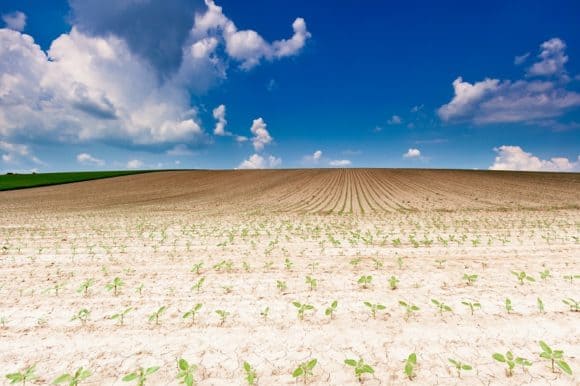
Young sunflowers on dry field © Werner Münzker | Dreamstime.com
Austria represents a good case study for agricultural drought risk management. Despite the agricultural sector’s rather small contribution to the country’s economic performance, it still has value and represents an important part of the country’s historical and cultural tradition. Around 80% of Austria’s total land area is used for agricultural and forestry activities. Equally important is its contribution to the preservation of landscapes, which is invaluable for many other sectors including tourism.
Globally, agricultural insurance is a widely used risk management instrument that is often heavily subsidized. Apart from the fact that the concept is increasingly being supported by European policymakers – the intention being that insurance should play a more prominent role in managing agricultural production risk – more and more voices from other sectors are calling for holistic management approaches in agriculture with the overall aim of increasing the resilience of the system.
There is a well-established mutual agricultural insurance company in Austria, which has high insurance penetration rates of up to 75% for arable land, and comparably high subsidies of up to 55% of insurance premiums. It is also encouraging to note that recent policy decisions support the timeliness of drought risk: in 2013, the Austrian government paid EUR 36 million in drought compensation to grassland farmers and in 2016, premium subsidies of 50% were expanded to other insurance products, including drought, while ad-hoc compensation due to drought was officially eliminated. In 2018, the subsidy rate was further increased to 55%. In light of these prospects, we investigated the management option space of the Austrian agricultural sector as part of the FARM project.
The 2018 Organisation for Economic Co-operation and Development (OECD) report on monitoring and evaluation of agricultural policies claims that efficient (drought) risk management in agriculture must consider the interactions and trade-offs between different on-farm measures, activities of the private sector, and government policies. The report further argues that holistic approaches on all management levels will be vital to the success of any agricultural management strategy.
In the course of our work, we found that agricultural drought risk management in Austria lacks decision making across levels. Although there is a range of drought management measures available at different levels, cooperation that includes farms, public and private businesses, and policy institutions is often missing. In addition, measures to primarily and exclusively deal with drought, such as insurance and irrigation, are not only limited, but (as we found) are also less frequently implemented.
As far as insurance is concerned, products are still being developed, and penetration rates are currently low. Drought risk is also highly uncertain, making it almost impossible to offer extensive drought insurance products. Irrigation is perceived as the most obvious drought management measure among non-agronomists. Simply increasing irrigation to deal with the consequences of drought could however lead to increased water demand at times when water is already in short supply, while also incurring tremendous financial and labor costs and additional stress to farmers. With that said, a large number of agricultural practices may also holistically prevent, cope with, or mitigate droughts. For example, reduced soil management practices are low in operating costs and prevent surface run-off, while simultaneously maintaining a soil structure that facilitates increased water holding capacity. Market futures might also stabilize farm income and therefore allow for future planning such as the purchase of irrigation equipment.
A workshop we held with experts from the Austrian agricultural sector further highlighted this gap. Thinking (not even yet acting) beyond the personal field of action was rare. The results of a survey we conducted showed that farmers were experiencing feelings of helplessness regarding their ability to manage the negative effects of droughts and other climatic extremes despite the implementation of a broad range of management solutions. One way to explain this could be a lack of cooperation across different management levels, meaning that existing efforts – although elaborate and well-proven – potentially reach their limit of effectiveness sooner rather than later.
Due to the more complex effects of any indirect/holistic drought management measure, we need tailored policies that take potential interdependencies and trade-offs into account. With evidence from the FARM project, my colleagues and I would like to emphasize an integrated risk management approach, not only at farm level but also in all relevant agencies of the agricultural sector in an economy. This will help to secure future production and minimize the need for additional public financial resources. Our findings not only contribute to ongoing high-level discussions, but also underpin the resulting claim for more holistic (drought) risk management with bottom-up data from our stakeholder work.
Note: This article gives the views of the author, and not the position of the Nexus blog, nor of the International Institute for Applied Systems Analysis.
Aug 27, 2019 | Climate Change, Environment, Risk and resilience, Young Scientists
By Luiza Toledo, IIASA Science Communication Fellow 2019
2019 YSSP participant Regina Buono investigates how the law can support or impede the use of nature-based solutions and help facilitate adaptation to climate change.
Recognizing the need for a systemic change is the first step to overcoming environmental challenges like climate change. In theory, governance systems can be designed and arranged to facilitate and embrace adaptation to climate change. Developing a legal framework that supports such an adaptation is, however, a big challenge. Learning how to manage the environmental crisis we currently find ourselves in while still being able to grow economically further complicates matters. According to Regina Buono, a participant in this year’s IIASA Young Scientist Summer Program (YSSP), nature-based solutions could be an alternative option that offers a multitude of benefits in terms of how this dual goal of economic growth and sustainability can be achieved. Buono’s research will contribute to IIASA as a partner in the EU Horizon 2020 project, PHUSICOS, which is demonstrating how nature-based solutions can reduce the risk of extreme weather events in rural mountain landscapes.
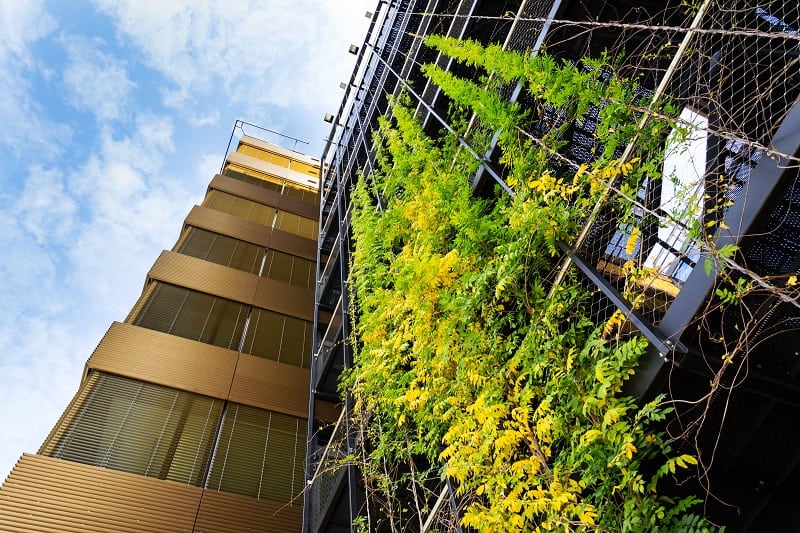
Outdoor green living wall, vertical garden on modern office building | © Josefkubes | Dreamstime.com
Nature-based solutions are actions to protect, manage, or restore natural ecosystems that address societal challenges, such as water security, pollution, or natural disasters – sometimes simultaneously. These solutions take advantage of the system processes found in nature – such as the water regulation function of wetlands, the allowance of natural space in floodplains to buffer flooding impacts, water storage in recharged aquifers, or carbon storage in prairies – to tackle environmental problems. This concept is now widely used to reframe policy debates on biodiversity conservation, climate change adaptation and mitigation strategies, urban resilience, as well as the sustainable use of natural resources.
As part of her research, Buono is exploring how the law can support or impede the use of nature-based solutions and considering how we can make legal systems more adaptive so they can help facilitate societal adaptation to a more uncertain world under ongoing and future climate change.
“My research is about using the law as a tool that works for us, rather than one that, because of its historic interest in stability, gets in the way,” she says.

Regina Buono, YSSP participant. | © Buono
Buono started her career as a lawyer based in the US. In her first job she was assigned to work with water issues and according to her, it was “love at first sight”. Following that first assignment, she continued to work on finding market-based solutions for issues related to endangered species. She decided to pursue a PhD in public policy in 2016, and soon after was asked to join the external advisory board to the Nature Insurance Value: Assessment and Demonstration (NAIAD) project in Europe. While attending the first meeting, she realized that there were no lawyers or legal scholars among the project researchers. As a lawyer, she could see that there was a gap in understanding how law and regulations would impact the uptake, development, and proliferation of nature-based solutions.
Working with NAIAD, she developed her PhD dissertation to address this gap and advance understanding around the role of the law in nature-based solutions, both in terms of governance in implementation and practice and the potential for governance innovation that better supports and promotes future adaptation.
“My YSSP project here at IIASA focuses on the city of Valladolid, Spain, and examines the legal context around the implementation of a collection of nature-based solution projects. I am trying to draw insights from these that could perhaps also be applied to other cases,” she explains.
Buono is doing a critical qualitative study that integrates analyses of interviews and policy documents using NVivo, a qualitative data analysis computer software package specifically designed to work with very rich text-based and/or multimedia information, together with legal analysis. She says that there is still a lot of work to be done to adapt to climate change and an interdisciplinary cross-sector effort will be necessary.
The preliminary results from her YSSP research point to a number of constraints and facilitating factors related to law and regulation. She says that the lack of explicit legal authorization for nature-based solutions that she identified in her study, strict water quality regulations, and bureaucratic hurdles could be some of the factors that constrain the implementation of nature-based solutions. However, flexibility in the law and a polycentric governance structure was identified as facilitating factors that encourage local entities to opt for nature-based solutions.
Buono hopes that her research will help decision makers to assess and address legal components that guide, structure, or impede the use of nature-based solutions, and to consider how the law could be evolved to create a more enabling environment for more adaptive governance arrangements that would better support nature-based solutions.
“Our policies and infrastructure are going to have to change to be able to deal with the impacts that we are already experiencing. Nature-based solutions and a shift toward adaptive governance could help us navigate more gracefully in these important transitions,” she concludes.
Note: This article gives the views of the author, and not the position of the Nexus blog, nor of the International Institute for Applied Systems Analysis.
Aug 21, 2019 | Air Pollution, Economics, Environment, Health, Young Scientists
By Luiza Toledo, IIASA Science Communication Fellow 2019
2019 YSSP participant Muye Ru investigates the main health impacts of air pollution and what this means for the economy and social development of a country.
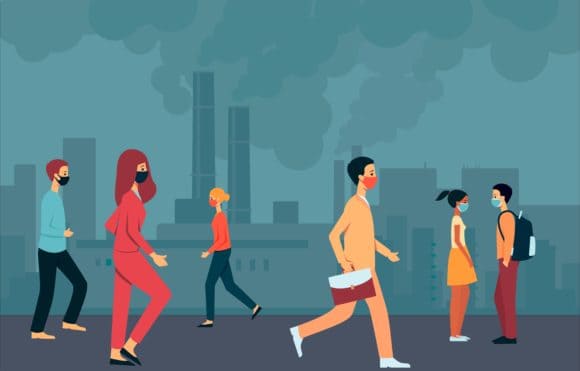
© Sabelskaya | Dreamstime.com
Air pollution is one of the greatest environmental health risks of our time. It is the second most common cause of non-communicable diseases like stroke, cancer, and heart disease, and it annually leads to around seven million premature deaths.
According to the World Health Organization (WHO), almost 90% of people worldwide breathe polluted air. Even though we can say that air pollution is impartial, affecting people regardless of gender, race, social class, or economic status, the burden of ill health caused by air pollution primarily affects middle and low-income cities and marginalized populations. The economic cost of air pollution and its impacts on health is known as non-market costs and includes the monetized welfare costs of mortality (premature deaths), and of the disutility of illness (pain and suffering).

Muye Ru, YSSP participant. © Ru
Muye Ru, a 2019 Young Scientist Summer Program (YSSP) participant, is studying the main health impacts of air pollution and what this means for the economy and social development of a country. Her project will establish a methodology based on meta-analysis, to estimate the economic costs of selected morbidity outcomes of exposure to air pollution in a population, and test its application at various geographical scales (national, regional, and global).
“The idea behind my work is that bad air quality causes a burden for societies. We know that many people will die or be disabled because of it, but we don’t have a very good understanding of exactly what the social and economic cost of that is,” explains Ru.
It is easy to grasp that the burden of sick and disabled people will affect the economy of a country. For example, imagine a scenario where a family member is diagnosed with lung cancer. The illness will most probably influence the entire family in terms of loss of income when the person is unable to work due to his/her illness, or reduced funds available for savings and necessities like food and utilities due to the cost of treatment.
Ru’s project specifically focuses on the rate and duration of air pollution related-diseases in populations. According to her, this rate is extremely important once you start studying the high economic losses and social disturbances caused by illness and healthcare expenditures.
“It’s about how people are disabled, the effect of this burden on their lives, as well as how these changes in their lives are impacting the economy,” she says.
Ru hopes that her work will be useful to policymakers in creating and applying policies to combat air pollution that will lead to multiple benefits for the economy, the environment, and human health. She wants her research to make people more aware of how they are contributing to air pollution and how the cost of it affects everyone’s lives.
Note: This article gives the views of the author, and not the position of the Nexus blog, nor of the International Institute for Applied Systems Analysis.
Jul 26, 2019 | Environment, Systems Analysis, Young Scientists
By Luiza Toledo, IIASA Science Communication Fellow 2019
2019 YSSP participant Roope Kaaronen investigates how changes in the urban environment affect people’s behavior and whether they will find it easy to engage in sustainable behavior in different environments.
Technological and industrial advances in many sectors have made our lives easier, but they have also contributed to a less sustainable way of life. From the industrial revolution to the present day, CO2 emissions have increased by 40% and about 95% of this increase can be attributed to human actions. We can therefore say that our actions shape the environment we live in. But how does the environment we live in in turn shape our attitudes and behavior?
Apart from the vast amount of information available to us and an increasing awareness of more sustainable consumption, our society still has a growing carbon footprint, which means that attitudes around sustainability are not really translating into behavior. There is a gap between having environmental knowledge and environmental awareness, and displaying pro-environmental behavior. Apparently, the answer to translating attitudes into behavior could have more to do with design than awareness.

Roope Kaaronen, YSSP participant. © Kaaronen
Roope Kaaronen, a member of this year’s IIASA Young Scientists Summer Program (YSSP) cohort, has made it his goal to study behavior change and the adoption of sustainable habits. His project investigates how changes in the urban environment will affect people’s behavior and whether people will find it easy to engage in sustainable behavior in different environments. He is looking at how pro-environmental behavior patterns emerge from processes of social learning (such as teaching and imitation), habituation, and niche construction (a process where agents shape the environment they act in).
“I am particularly interested in how the physical environment shapes our behaviors, because people often assume that they have a pro-environmental attitude or values, and that this automatically translates into sustainable behavior. Research however shows that this is often not the case. So actually, the physical environment is more important in determining how we behave than we think,” he explains.
For instance, suppose that you would like to start recycling more but your city doesn’t have a proper selective waste collection system. Because the infrastructure needed to promote pro-environmental behavior is missing, this can lead to feelings of frustration and hopelessness, which could in turn cause people to give up on even trying to engage in the behaviors that could lead to more sustainable outcomes.
Kaaronen uses agent-based modeling in his research to model the cultural evolution of sustainable behavior patterns. The idea is to study how opportunities for action can have self-reinforcing effects on behavior. He included agents who move on a “landscape of affordances” in his model, and these agents are connected to each other in a social network. In this context, the term “agents” represents individuals or groups in society.
Social psychology describes pro-environmental behavior as conscious actions made by an individual to minimize the negative impact of human activities on the environment. For Kaaronen, this means that we can only achieve sustainable goals if we change our behaviors or habits very quickly.
“I think that it’s not realistic to expect that technology will solve all our problems. We will have to start behaving differently,” he says.
Unfortunately, people very often assume that individuals’ actions don’t have as much impact as collective actions, leading them to postpone their own pro-environmental behaviors. There have been a lot of discussion in the media around whether one person’s attitude could have an impact on the environment, in other words, should the focus be on each individual making changes in the way they live, or should the focus be on whole systems changing. To Kaaronen, these two approaches are connected.
“Systems emerge from individuals and their collective interactions. As we are social animals, our actions are inevitably copied and imitated by other people. This means that a person who has a lot of influence will have many people copying them. In other words, whenever we talk about private environmental behavior, such as recycling or using public transport rather than driving a car, we tend to think that this is just our personal behavior, but of course, our choices form part of a much bigger system,” says Kaaronen.
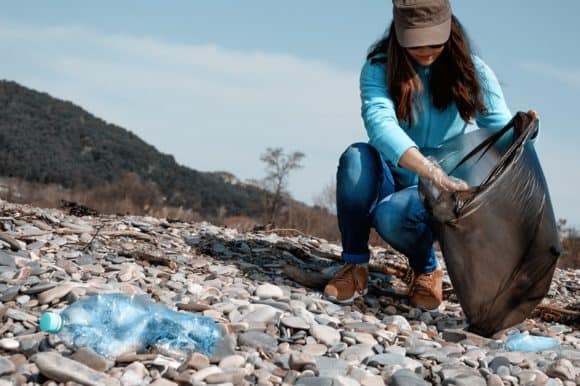
Woman helps clean the beach of garbage. © Freemanhan2011 | Dreamstime.com
We should be aware that we need politicians to make our pro-environmental choices as easy as possible. As individuals, we have responsibilities because we are part of the social system, but it is up to the political system to encourage this kind of behavior on a larger scale.
In 2007, the Danish government developed a strategy that prioritized bicycling as method of transport in Copenhagen. Since then, the city has seen a rapid increase in the number of people cycling, showing that affordance is important to promoting behavior change. Kaaronen’s model is able to reproduce patterns of behavior change, such as the case of Copenhagen.
“I think in terms of policy, what I am doing is quite applicable in urban design. What I am trying to show is that if we make sustainable behavior easy and lucrative, this can lead to long lasting and self-reinforcing effects on the emergence of sustainable cultures,” he comments.
The advent of social media has made it easy to influence people’s attitudes and behavior. The model that Kaaronen is using also illustrates how behavior change can spread through tightly knit social networks, and how social learning in networks can have self-reinforcing effects on behavior change. He says that we should use this tool to spread awareness about sustainable habits and initiate cultural evolution towards sustainable societies. In terms of behavior, living by example is very important, since it is necessary to show that living a sustainable life is both possible and enjoyable. Kaaronen himself lives this philosophy as he doesn’t drive and tries not to eat meat. He also stopped flying two years ago.
“I am just travelling on the ground right now. It is part of a campaign in the academic environment called #FlyingLess. Buses and trains can take you to interesting places, but it of course takes up a lot of time and I realize that not everyone can do this because they live in places that aren’t well connected.”
We are so used to unsustainable forms of behavior like constantly driving, flying, and consuming meat, but the world needs to realize that this way of living cannot last forever. It is unsustainable. Even though it may appear challenging to change our behavior, Kaaronen’s research offers hope to keep believing that it is possible to change our unsustainable behavior and achieve a sustainable society and environment.
“I think it is important to show that these things are actually possible. We can reach a tipping point towards sustainable systems if enough people just start practicing what they preach,” he concludes.
Note: This article gives the views of the author, and not the position of the Nexus blog, nor of the International Institute for Applied Systems Analysis.










You must be logged in to post a comment.